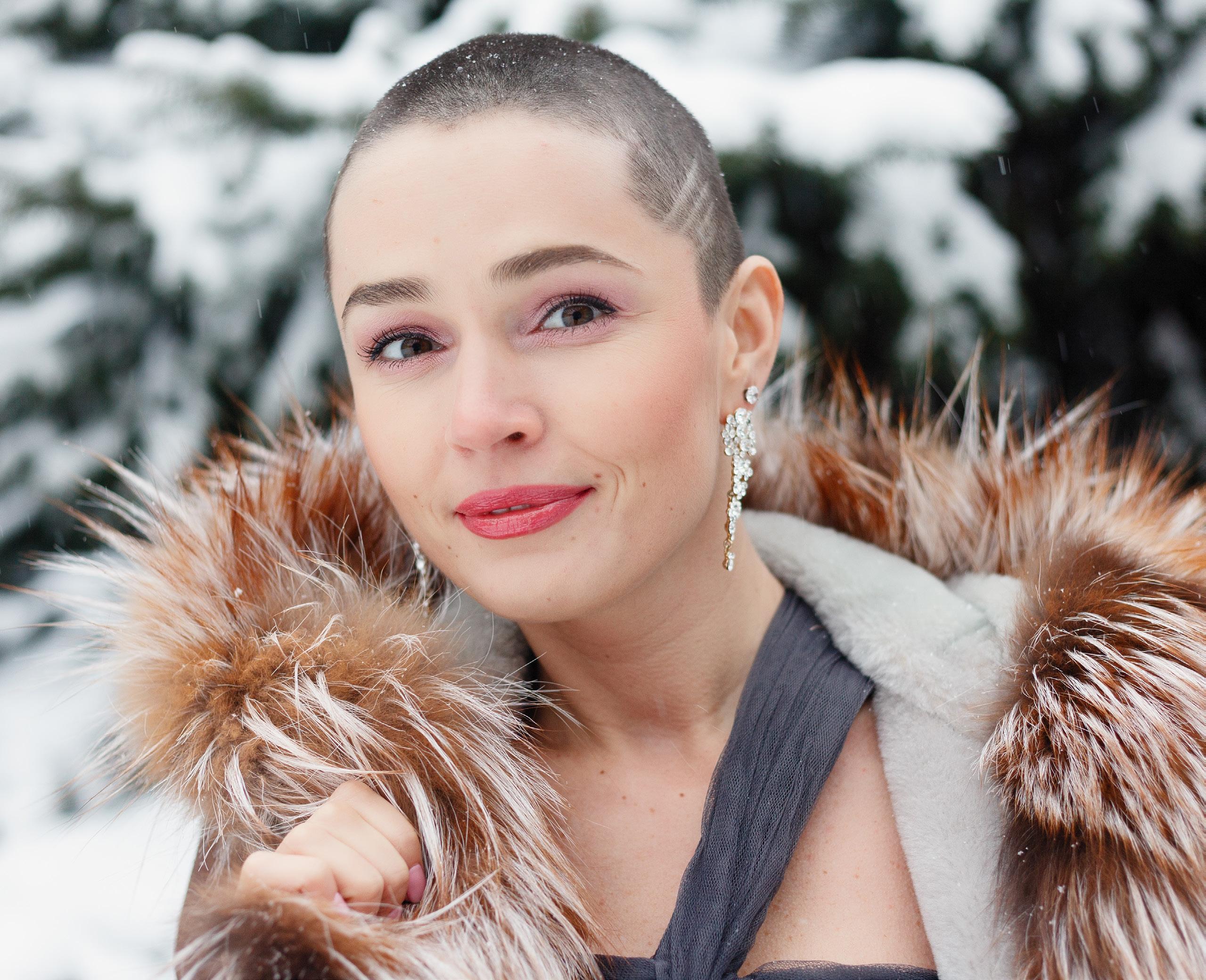Uterine Cancer
A diagnosis in her 20’s didn’t stop Ssiala’s drive to dress her best.
IS INTEGRATIVE ONCOLOGY?
FRIENDS WHO STAY & FRIENDS WHO STRAY


Editor’s
Letter

A diagnosis in her 20’s didn’t stop Ssiala’s drive to dress her best.
IS INTEGRATIVE ONCOLOGY?
FRIENDS WHO STAY & FRIENDS WHO STRAY


Letter
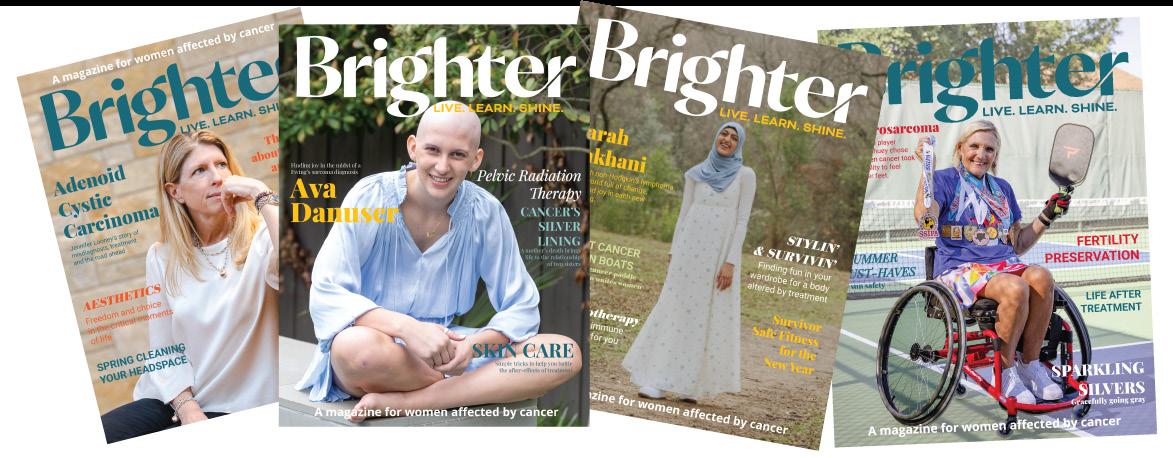
Over the last year, Brighter Magazine has worked hard to prove the concept, benefit and need for a publication to support and encourage women with cancer. We are thrilled to announce with resounding cheers that the magazine has been hailed as not only “long overdue” but “necessary” for survivors. Requests for magazines, both to individuals and cancer facilities are continuing to grow, and we are developing wonderful relationships in communities across the nation. We are truly honored and genuinely thrilled to do this work.
In our next four issues, you will continue to find new and encouraging content to help you in your daily life, whether you’ve just recently been diagnosed or are years out of treatment and still dealing with aftereffects. We’re also excited about some extra sections that will become recurring features in the magazine this year. Her Favorite Hobbies, Brighter Reads, Paying It Forward and Share Worthy Recipes will add dimension and variety to our pages. Our hope is that you will not only enjoy these additions but will contribute some of your own experiences to share with our community as well!
The editorial team will also work over the next year to increase our beauty and fashion features while engaging survivors to help us fill our pages with more photos that are representative of our readership at the same time. Our model call was such a huge success in 2022; we hope to do more of that this year, and in other cities too!
With our growth in service also comes a growth in need. We hope you will continue to support Brighter Magazine by telling your friends and family about us, asking them to donate to our mission and helping us develop relationships with corporations and organizations that would want to partner with us to serve women affected by cancer.
Here’s to 2023! We hope it brings a year of unexpected blessings, new growth and continued healing. We’ll be with you, helping you experience life to the fullest.

A special thanks to Michele Sabin for the makeup artistry she provided for our cover models in our last issue. Michele is a Senior Director at Beauty Counter, and she is passionate about clean beauty. As a makeup artist, Michele exclusively uses BeautyCounter in her kit. She recognizes the importance of better beauty, safer solutions and the highperforming products of BeautyCounter products for survivors. Working with her colleague and Brighter writer, Amanda Guillot, these women had our cover models looking like a million bucks!
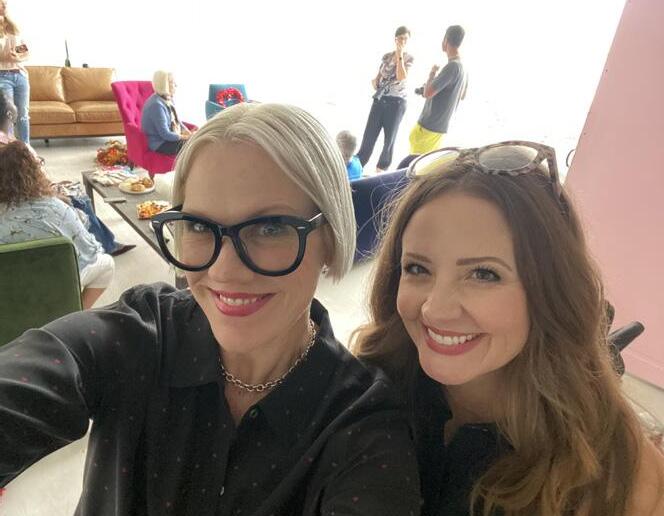
MEET A BRIGHTER CORPORATE SPONSOR

Brighter Magazine would like to thank Dr. Spencer Miller at Brain Treatment Center of Dallas for his generous sponsorship.
MEET JAMIE L. HESS - New Brighter Beauty Writer - p.12
MEET CARA PRICE- New Brighter Nutrition Writer - p.24
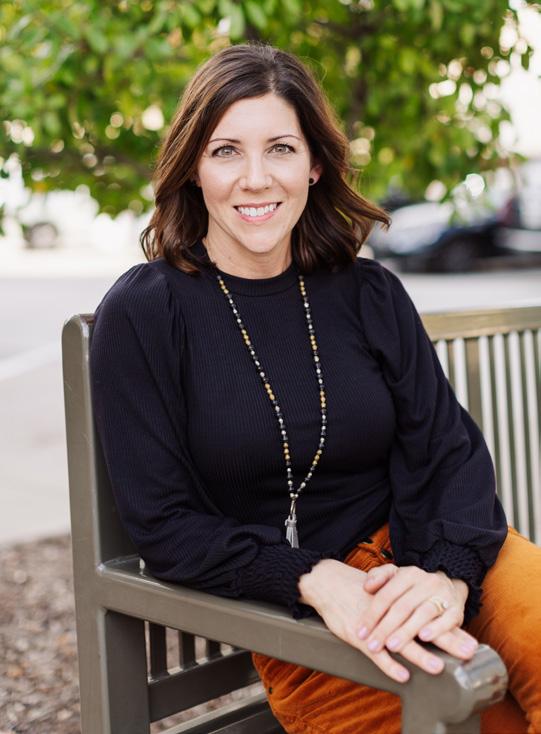
Meet Cara Price, new to the Brighter writing team. Cara Price is the recipe creator, Jesus loving blogger & nutrition coach of The Nourished Body and Soul. After struggling for 3 years with debilitating pain, she found healing through a foundation of whole foods & now shares that knowledge with nutrition clients and readers of her website where she offers whole food recipes and articles to help women find nutritional healing.
Cara’s goal is to help women learn the value of a whole foods based approach to nutrition and to balance their spiritual, physical & emotional health so that they can live the abundant life God desires for them.
MEET MARI GALLO- New Brighter Medical Writer - p.30
Mari Galle, DACM, LAc is a Doctor of Acupuncture and Chinese Medicine, licensed acupuncturist and oncology acupuncturist at Cancer Rehab & Integrative Medicine. She earned her Doctorate of Acupuncture and Chinese Medicine at the Pacific College of Oriental Medicine. She holds a Bachelor of Science degree in Biology with a concentration in Biomedical Sciences, Nutrition and Spanish. Mari is passionate about a multi-disciplinary, collaborative approach to treating cancer patients using integrative oncology and evidence-based medicine. She treats patients from the beginning of diagnosis, throughout treatment and into remission. Her role in a cancer care team is to prevent and manage side effects and symptoms associated with diagnosis and treatment. Mari is the co-founder and board member of the Moving Beyond Cancer Collaborative nonprofit and is a board member for Regarding Cancer nonprofit in Austin, TX.
Founder
Helen Bowles
Helen@brightermagazine.com
Board of Directors
Helen Bowles
Shari Johns
Erin Schreyer
Suzen Stewart
Rebecca Walden
Editors
Madeline Muller
Erin Schreyer
Rebecca Walden
Writers
Mari Gallo DACM, Lac
Jennifer Gill MD Ph.D.
Jamie L. Hess
Jennifer Looney
Meredith Mitstifer Psy. D
Madeline Muller
Debbie Norris
Cara Price
Amy Scottino LMT, MTI, CEP
Kerri Steele
Sophie Wix
Graphic Design
Helen Bowles
Andrea Brusuelas
Photography
Cara Price
John Ronin
Erin Schreyer
Adobe Photos
Cover Photography
John Ronin
TheJohnRonin@gmail.com
Videography
Sal Hussain
Salsmediaproductions@gmail.com
Advertising
Jennifer Looney
Jennifer@brightermagazine. org
Distribution
Liz Pounds
Liz@brightermagazine.org
Fundraising
Jennifer Looney
Jennifer@brightermagazine.org
Hospital Liaison
Liz Pounds
Liz@brightermagazine.org
Corporate Sponsorships/ Donations
Jennifer Looney
Jennifer@brightermagazine.org
Caroline Ackerman
Erika Anne
Beverly D. Atkins
Erin Attfield - Quinlan
Valasie August
Terry and Molly Babilla
Kathryn and Robert Bagwell
Karla Baumgartner
Jerome and Lori Beard
Cameille Berry
Erin Boothroyd
Cynthia Bowen
The Ryan Bowles Family
The Don Bowles Family
Anonymous
Andrea Braendlin
Carolyn Brown
Laura Bruck Renzelman
Jessica Cai
Mr. and Mrs. Mark Campbell
Carolyn and Dr. Michael
Chapman
Yiming Chi
Lisa Christensen
John Christner-Drake
Carrie Cioni
Ashley Coleman
Laura Craig
Christina Crain
Dustin Croff
Mr. and Mrs. A.B. Cruz
The Dave Family
Donald and Mary Dreger
Jamie Elliot - Shuey
Liz and Lane Farley
Kristin Finch, BeautyCounter
Andrea and Dr. Doug Flora
Robyn Freeze
Alma Friend
The Gaines Family
Kari Galanos
Lisa Gallagher
Carm Gallo
Denise Giiovinazzo
Carol Goglia
Bridget Goldman
John and Teri Gordon
Suzanne Goswick
Kimberly and Aaron Graft
Tracey Green
Tiffany and Mark Gross
Wendy Hall
The David Hardie Family
Hardie’s Fresh Foods
Kristy Harrod
Lisa and Steve Henry
Elizabeth and John Hoffman
Van and Jeanne Hoisington
Patricia Hudgins
Tiffany Huffmaster
Grear and Molly Hurt
Dr. Dustin James
Tim Johnson
Melinda and Jim Johnson
Leonda Kelley
Arthis Kliever
Kathy Kuras
Kathryn Lambeth
Kristen Lauro
Delores Letart
Robert Lowell
Mary Maday, Jean’s Mom
Glenda Majchrzak-Johnson
Patricia Malone
Georgeann Manfredonia
Lois Manowitz
Holle McSpadden
Manish Mehta
Zubin and Mamta Mehta
Sarah Meyer
Johnross Miller
Spencer O. Miller, M.D. at Brain
Treatment Center Dallas
Katrisha Milligan
Nicole Montgomery
Drs. Matthew and Erica Muller
Preeti Naik
National Ovarian Cancer Coalition
Jennie Nemec
Kathy Nemec
Michelle Nicoud
Kathy Orsak
Rick and Joy Osborne
Christine Reisel
Krista Rekos
Darcy Ribman
Elizabeth Royse
Lorraine Schlaghek
Ava Danuser and Family
Ed and Erin Schreyer
F. William Scott
Cody Seabolt
Sewell Automotive Companies
Carol Seiber
Tinsley Silcox
Maria Slabaugh
Christy and Steven Smith
Sylvia Stadler
Anonymous
Mr. and Mrs. George W. Steele
Cathy Stelzleni
Kathryn Stevenson
Kathleen Stewart
Suzen Stewart
Jennifer Stockwell
Megan Sun
Dr. Alec and Tackett
Linda Thomas, Perimeter
Imaging
Darla and James Thompson
Annelise Thornton
Angie Vaughan
Basillio and Lori Villareal
Tracy Voltin
Neasa Waaler
Krista Waitt
Allison Watkins
Bob and Linda Watson
Clare Weber
The David Weber Family
The Whitaker Family
Scott and Kristi Wilson
Michael J. Wittgen
Sophia Wix
Genevieve and Doug Woodward
Linda M. Wolfe
Larry Young
MaryAnn Zacchea - Stinton
Amy Zicarelli
Cynthia and Terry Zimmerman
Are you or is someone you know a writer, photographer, blogger, web designer or podcaster? Do you work with cancer survivors and have knowledge and wisdom to share with our readers? We would love to hear from you. Brighter magazine is always looking for people to help us with our mission. If you are interested in lending your talents and giftedness, please reach out to us today at contact@brightermagazine.com.
Subscribe to Brighter magazine at www.brightermagazine.com.
Advertise to expand your reach. Contact us at info@brightermagazine.com.
Donate to support Brighter on our website or save fees by mailing a check to:
Brighter Magazine
3950 Royal Lane Ste - E 161 Dallas, Texas 75230
Brighter Magazine is 501c3 nonprofit, all donations are tax deductible.
Information in Brighter magazine is to provide you with encouragement, awareness and education. The articles reflect the opinions of the authors and are not to take the place of professional medical advice. There may be a variety of perspectives on the subjects covered in Brighter. Tips, treatment and advice that is found helpful for some may vary based on the person. All of us at Brighter suggest that you talk to your medical team before making any changes to your lifestyle or daily living.

By Jennifer Looney Head and Neck Cancer Survivor

As I sit to type this piece, my arms are feeling the burn from a recent workout. A brief ten minutes and my mood transformed using tiny, black weights of only two pounds. Exercise provides an endorphin boost superior to any caffeine shot or pharmaceutical aid available. We survivors have the ability to awaken our natural pain relievers with movement. This is the medicine upon which I choose to depend.
Funny thing about healing is, healing hurts. This concept was unfamiliar to me before receiving a diagnosis of head and neck cancer a year and a half ago. Being physically fit and able to perform athletically does not have to be erased because I have cancer. I can educate myself and slowly navigate the highs and lows of survivorship. With radiation and chemotherapy treatments in the rear view mirror, I now get to rebuild this body that has become somewhat foreign to me. “Get to” instead of “have to” is the way I prefer to tackle life. I made it to the healing step armed with a body that allowed me to survive. It deserves the very best!
I know I am not alone, feeling like a lab rat, fielding big SAT words from oncologists, while learning how my labs and scans measure up each round. Thankfully, the team of professionals employed to improve my health (more like save my life) are focused on the scientific reports. Much of my focus is directed to activities not measured on a medical chart: exercise, muscle strength and movement required for longevity.
Thanks to radiation therapy, my balance was wrecked, my strength was shot and my confidence was absent. Employing a fitness routine was a challenge. However, steadily I became empowered to persevere. Short rides on a stationary bike elevated my mood, while building muscle in my legs. Countless times I fell down trying to hold yoga poses too soon after treatment. Eventually I achieved vestibular success, which was a gigantic personal breakthrough. Little successes are what I collected. With each workout, my appetite increased, helping fuel my body to become stronger. I have finally developed a routine that works for me in the privacy of our home, with little equipment. What works for you?
Fitness is as critical to our mental health as it is to our physical health. After feeling rotten for untold months, exercise makes me feel outstanding. Granted, baby steps are definitely necessary to build strength after cancer treatment. Communication with doctors is a must. As the proverb goes, slow and steady wins the race. But as I become new and improved, it enhances my ability to get to experience life fully with cherished family and friends. “Wait for Mom” is becoming a thing of the past. Excuse me, while I proudly move to the front of the pack. It is not always easy, this new body to rebuild, but what a privilege it is to put one foot in front of the other with intention. When you are ready, give yourself the best prescription you can—movement.
By Jayna Dave
A cancer diagnosis often brings lifestyle adjustments, including your wardrobe. Treatment can affect your body in a variety of ways, including heightened skin sensitivity and weight gain or loss. Thankfully, as your closet transitions for your comfort, you can remain just as fashionable. With winter in full swing, here are some stylish, yet cozy cancer-friendly pants.
Recently, baggy jeans have become a noticeable trend. Worn by numerous celebrities, these jeans feature a more wide-legged design. In addition to being one of the most popular styles, they are also convenient for cancer patients. Baggy jeans offer greater comfort due to their looser fit. Also, weight fluctuations from treatment become less of a concern since this style easily hides the changes. To ensure a proper fit around your waist and hips, pair with a stylish belt or colorful scarf pulled through the belt loops. You can experiment with many varieties, including wide-leg, boyfriend and flare jeans.
Cargo pants have come back into style, becoming a modern wardrobe staple again. Cargo pants come in a variety of different styles and fits. Some taper at the ankles, while others offer a straight-leg or wide-leg fit. Some have a cool utilitarian feel, allowing you to conveniently stash items like your phone or a lip gloss, while others have a more sleek aesthetic. In addition, cargo pants can be embellished with numerous features, including zippers, pockets and ties so you can not only hold things, but also connect them with a carabiner clip. Dress them down with a simple t-shirt, or dress them up with a sweater or blazer. If you want a more adjustable waist, try cargo pants that come with a drawstring. Regardless of their design, cargo pants present a comfortable, stylish and functional pant option.
Like baggy jeans, wide-leg trousers are trendy, looser-fitting pants. Because trousers can be dressed up or down, they are perfect for streetwear, as well as more formal events. Neutral colors are a staple, as they pair well with nearly any top. For a bolder look, try bright-colored trousers, like red, green or pink. You can also experiment with different prints and patterns to make a statement. From cozy turtlenecks to elegant blouses, trousers pair well with nearly any outfit. Specifically, low-waisted trousers are especially popular right now. This style provides an extra comfortable option if you’re undergoing treatment. The low waist won’t interfere with any bloating or weight gain, making the trousers not only fashionable but functional.
As treatment progresses, your skin might become more sensitive, moist, or dry. You may find that thicker or rougher fabrics can cause irritation to your skin. Avoid fabrics like wool and polyester, and opt for softer, more breathable fabrics instead. Cotton, bamboo, rayon and silk are all comfortable choices while going through treatment. Your skin will thank you for it! Remember to have some fun with these changes and take this opportunity to play with your style and use it as a mood-booster. There are many ways to rock a warm, fashionable outfit this winter!
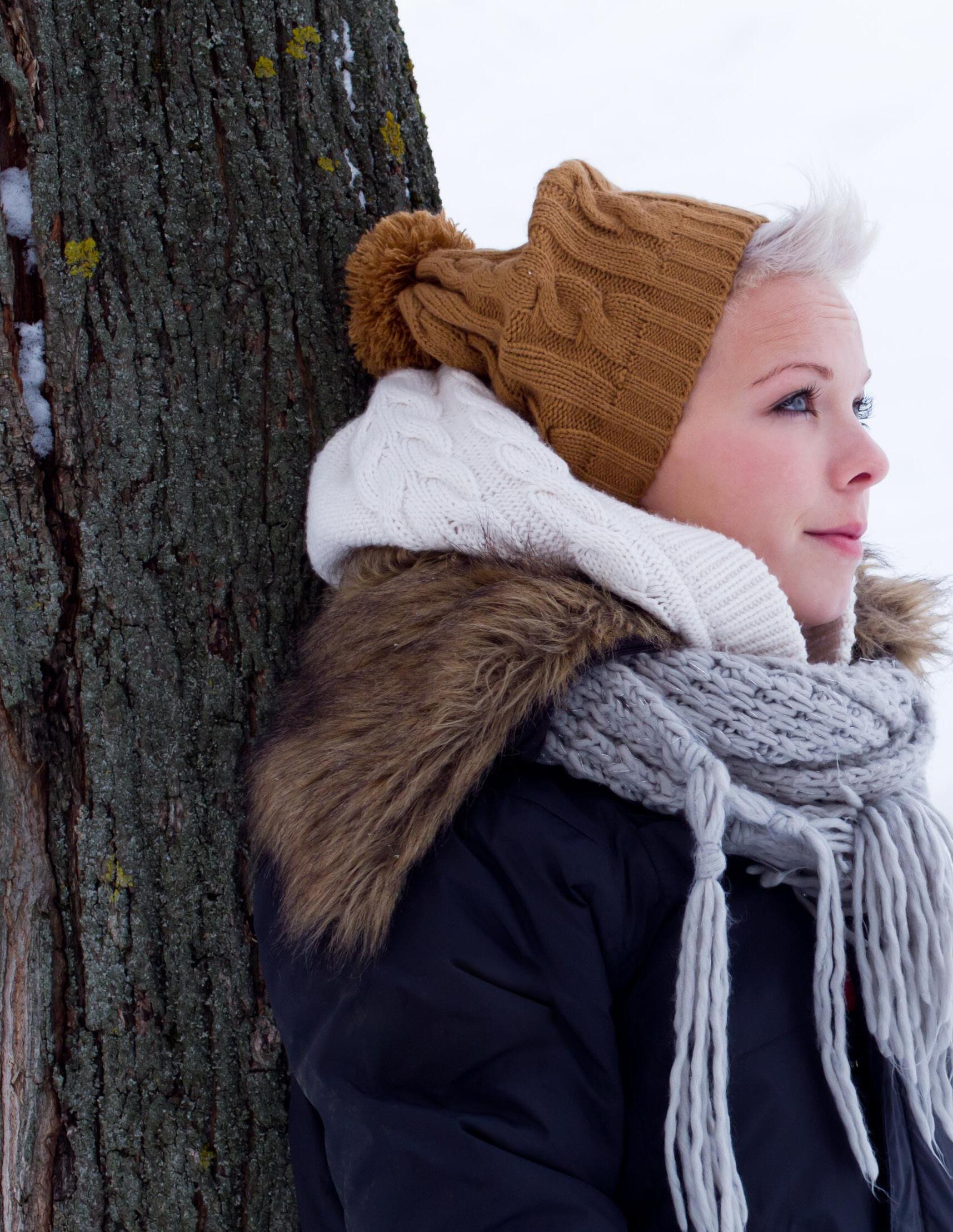
By Debbie Norris Ovarian Cancer Survivor and Advocate
You’ve recently finished treatment and have started feeling grumpy, not your normal self. You just want to hibernate, let alone wake up to go to work. You want nothing to eat but comfort food. You don’t want to be around other people. You’re crying at weird times and snapping at others for no reason.
Maybe you’re in treatment and just don’t want to be around people. Or you’ve been out of treatment for years, yet all the above still rings true. Whatever your symptoms, it’s important to figure out if this funk is just the winter blues or something more.
As a cancer survivor, let’s first discuss the elephant in the room: survivor guilt. This is a form of depression some survivors can experience just because you’re still alive while others are not or because you have flown through your treatment and others are still struggling. This guilt is real and should never be pushed aside or dismissed. You need to meet it head on and deal with these feelings.
I personally suffer from survivor’s guilt throughout the year. Whenever I learn of someone with the same cancer passing away, it rattles me. I wonder, “Why them and not me? Why was I diagnosed at stage 1 and not at stage 4? Why am I still alive?” The feeling eventually subsides, only to be triggered once again when I learn of another cancer-related passing. If you, as a cancer survivor are experiencing this type of guilt, be sure to talk with your doctor or oncologist. They can help you find the tools you need to work through this issue.
Winter blues tend to be more seasonal. The trees are bare and brown, the days are growing colder and it’s getting darker
earlier. All of these things, no matter where you live in the U.S., can collectively affect both mood and mental health. These symptoms tend to have more of a predictable onset, often at or near the changing of the seasons. Another big clue is if this appears to be a cycle for you at or around the same time each year.
Depression, on the other hand, feels more like a lingering darkness that seems to always be there, no matter what you do. If that resonates, it’s advisable to seek out an assessment from a mental health specialist. Start with your primary medical professional for recommendations. There are so many beautiful opportunities to find joy in and after cancer, and there are a lot of tools that can help alleviate the symptoms of depression. Don’t let your pride or the perceived stigma of mental health keep you from seeking out support.
Less daylight and cooler temps translate to fewer opportunities to soak up natural Vitamin D. Your body needs it, which may make a Vitamin D supplement a smart choice for you. Start with your primary care doctor for guidance here, since they know your full health history and your regular prescriptions.
Supplement or not, there is no debating the fact that time spent outdoors, however you can squeeze it in, can help you get through emotional doldrums.
As for healthy coping strategies, it’s all about mixing things up. Whether you lean more introverted or extroverted, we all need a good balance of activity and individual quiet time to reset, refresh and recharge.
Tear out our handy list and stick it somewhere you’ll see it daily. On any given day, try a few of these ideas to achieve a sense of satisfaction, accomplishment, pleasure, fellowship and rest.
Soak up local arts & culture. Many places have indoor winter farmers markets, craft fairs, expos for different interests and indoor festivals.
Take a hike. Check out county and state parks for group hikes. When winter gifts you a milder than normal day, seize it. Walk the neighborhood if you can’t get to a park; just make sure you soak up the sunshine and fresh air.
Host a game night. From Bunco to Phase 10, to even some of the cheekier games like Cards Against Humanity, there are nearly countless options. Also, it’s impossible to be withdrawn and moody when you’re having fun playing games with friends. If that seems too ambitious, invite a friend to grab coffee or lunch. Just a 30-minute outing with someone you care about can change your entire day. Find a new read. Fewer quiet winter activities are more satisfying than curling up under a comfy blanket with a good read. Allow yourself a small splurge. From a scented candle with a fragrance that transports you to your happy place, to a few bunches of long-lasting alstroemeria for your kitchen vase, even a new pair of cozy winter PJs - treat yourself to something that will make home feel more enjoyable. De-clutter. It can be really cathartic to do a deep purge of the clothing, knick-knacks and accumulated stuff that is stashed in certain spots around the house.
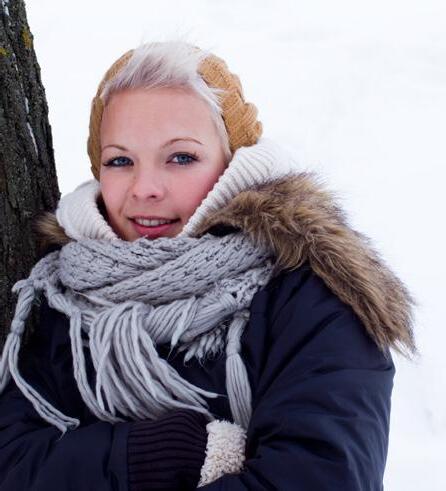

Plan a vacation. Whether it’s for spring break or summertime, throw yourself into the research and location scouting of a fun future trip. Often the dreaming and planning can help lift us out of a rut, plus it’s nice to look forward to!
By Jamie L. Hess Makeup Artist
You’ve likely already seen the work of Jamie Hess - you just didn’t know it. She is the behind-the-scenes talent working with A-listers and supporting cast actors on some of Hollywood’s biggest films. Her number one job is to ensure these performers are camera-ready at all times. That’s no small task, considering how common it can be to have insanely early (and late) call times. Trust us - it takes some kind of Hollywood magic to make anybody look well-rested and vibrant at 2 a.m.
Her own routine is also her professional calling card. She quite literally has to put her best face forward before she ever sets foot on any set, and she has to keep it that way, no matter how grueling the day’s schedule becomes. Suffice it to say, this girl’s recommendations carry serious weight with us.
Below are Jamie’s beauty must-haves - and happily, it includes some drugstore price points!
Eminence Coconut Age Corrective Moisturizer
Coconut, shea butter and grape seed oil fully hydrate and firm the skin in this luxuriously, decadent formula. It is a staple in
my personal and professional kit for all skin types that need an extra dose of hydration.
Skin Ceuticals Vitamin C E Ferulic Serum
Packed with Ascorbic Acid, Vitamin E and Ferulic Acid, Skin Ceuticals has created a gold standard for a daily vitamin C treatment. This serum is gentle on the skin, while improving fine lines and wrinkles, neutralizing free radicals and overall brightening the skin.
Elta MD UV Clear Broad Spectrum SPF 46
This sunscreen is light in texture, but heavy in quality and one of the few chemical sunscreens that she recommends. With no white cast, it works for all skin tones and its silky, delicate texture pairs beautifully under foundation.
Weleda Skin Food

A lanolin based moisturizer that packs a punch with Calendula, Chamomile and Sweet Almond Oil. For any dry skin on the body, this is a one-hit-wonder that does it all. Pro Tip: When skin is feeling extra dehydrated, use this at night like a moisturizing mask. It seals in all treatments and serums, but because of the richness of this product, sleep with hair away from the face on the nights that you do this.
Maybelline Color Tattoo 24 Hour Cream Eyeshadow
A stay all day shadow - true in color, waterproof and crease and fade resistant - seems to good to be true, but it’s not. This is a personal and professional favorite to use on its own or as a base for powder shadows. On many days, you’ll find her wearing “High Roller” opaque on the lid and sheer in the crease.
The no makeup and neutral makeup trend is what we’ve seen for the last two years as we’ve all existed in various states of masking. But now, people are ready to show their faces again, and we’re seeing that with makeup as well. Styles are becoming bolder with brighter colors too.

Viseart Mini Palettes
Something small and significant - that is exactly what these mini palettes are. With a palette that holds 4 or 12 colors, these mini shadows are a saturated, pure pigment in a variety of textures and colors that blend beautifully into the skin.
Maybelline Super Stay Ink Crayon Lipstick
Rich, opaque colors in a non-drying formula that can last through a day at work or an evening out makes this an instant go-to. (I still have to wear a KN95 mask at work, so this has been thoroughly tested.) It’s quite comfortable and it doesn’t budge.
L’Oreal Lash Paradise
A regular mascara that wears like a waterproof one, that doesn’t flake or smudge, yet comes off easily at the end of the day, is a winner! Great in the humid jungles of Hawaii to the dry deserts of New Mexico, it’s my never-fail solution. Pro Tip: This is a heavier formula mascara, so I suggests curling your lashes before application to give them an extra lift
The art of transformation is something that has always peaked Jamie’s interest. Her background as a former dancer and theater kid unknowingly prepared her for her career as a makeup artist in the film and television industry. She loves how the power of makeup can bring to life a character on screen or simply help someone make a statement to the world. Her work can be seen in “Top Gun: Maverick” and the upcoming films “Oppenheimer” and “Beverly Hills Cop 4.”
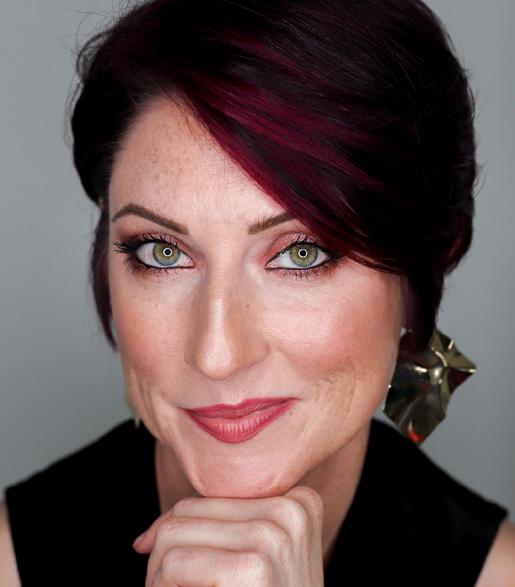

By Meredith Mitstifer, Psy. D Licensed Clinical Psychologist Ovarian Cancer Survivor & Advocate
Cancer has a way of causing significant disruptions in your life, including friendships. Don’t get me wrong, some friends truly rally and offer amazing support. And while you didn’t want a cancer membership, you might also make wonderful new friends in the “club” during your treatment. But what about those that fall into the phenomenon known as “cancer ghosting,” according to Sarah Graham (Refinery29.com)? Ghosting has been defined by the practice of ending a relationship with someone suddenly and typically without explanation. This response can be normalized by research carried out by War on Cancer, a social networking app for cancer patients which reports 65% of respondents said friends or relatives disappeared or decreased/cut contact after their cancer diagnosis. While not uncommon, this reaction can be hurtful, confusing, and another “side effect” that a survivor may endure.

Acceptance in the psychology world involves acknowledging and embracing the full range of your thoughts, feelings, and emotions, rather than trying to avoid, deny or alter them. As cancer survivors, we are forced into “accepting” so many changes, and unfortunately friendships are not exempt. Having cancer will most likely change your friendships. Some changes may surprise you while you bear witness to an overwhelming outpouring of kindness, compassion, and grace. You may become closer to some friends, especially those that can relate, while other friendships may dissolve no matter what you do. Some friendships are not over, but they may just be different. It goes without saying that cancer and COVID have also limited our abilities to connect, depending on our responses to treatment.
Research has indicated that people with cancer need support from friends. Specifically, studies have found that cancer survivors with strong emotional ties to friends tend to adjust to a cancer diagnosis better, have a more positive outlook and often report a better quality of life. The literature also suggests that meeting other cancer friends can make the world of difference. Survivors commonly report that you can “say anything” to other friends with cancer. Cancer friendships seem to offer radical acceptance, where one is understood even if little is spoken.
It can rob you of your health, time, hair, plans, etc. Abandonment of friends can cut just as deep. However, like cancer, we are only in control of so many things. It sucks. I’m sorry but there are no better words. Even if we cannot control those that stray, it may help to understand why they run away. There are common reasons why friends may abandon you during cancer treatment.
Fear. Fear can lead friends “astray.” Some can’t confront their own fears, and seeing their friend with cancer may be one of them. Perhaps you have been their strength and it’s difficult for them to see you sick or weak. They may not understand everything that is happening and are
too fearful to ask. Some even relate cancer to death. As an already death denying America, too much grey may lead them to stray.
Awkwardness. Cancer can present a situation where friends do not know how to respond or act. People that have never experienced a tragedy may not know what to do or say, or even fear saying the wrong thing, so leaving you alone may be their solution. This may result in a friendship that strays.
Helplessness. No one likes to feel helpless and watching a friend battle cancer offers little way around this. Some friends may be fixers and cancer is not something that can be “fixed” by them. When friends feel like they can’t offer “a way,” they just might stray.
Friendships that stray can be painful. Recognizing that a friend’s reaction is not in your control goes back to the theory of acceptance. Acknowledge and embrace your full range of thoughts, feelings and emotions, rather than trying to avoid, deny or alter them. And one last note, it’s just as important to recognize friendships that simply need to be “unfriended.” If you are feeling drained, and/ or exhausted or sense a lack of reciprocity or boundaries with a friend, it may be time to stray yourself. Treatment is toxic enough. Breaks are allowed. Take care of you.
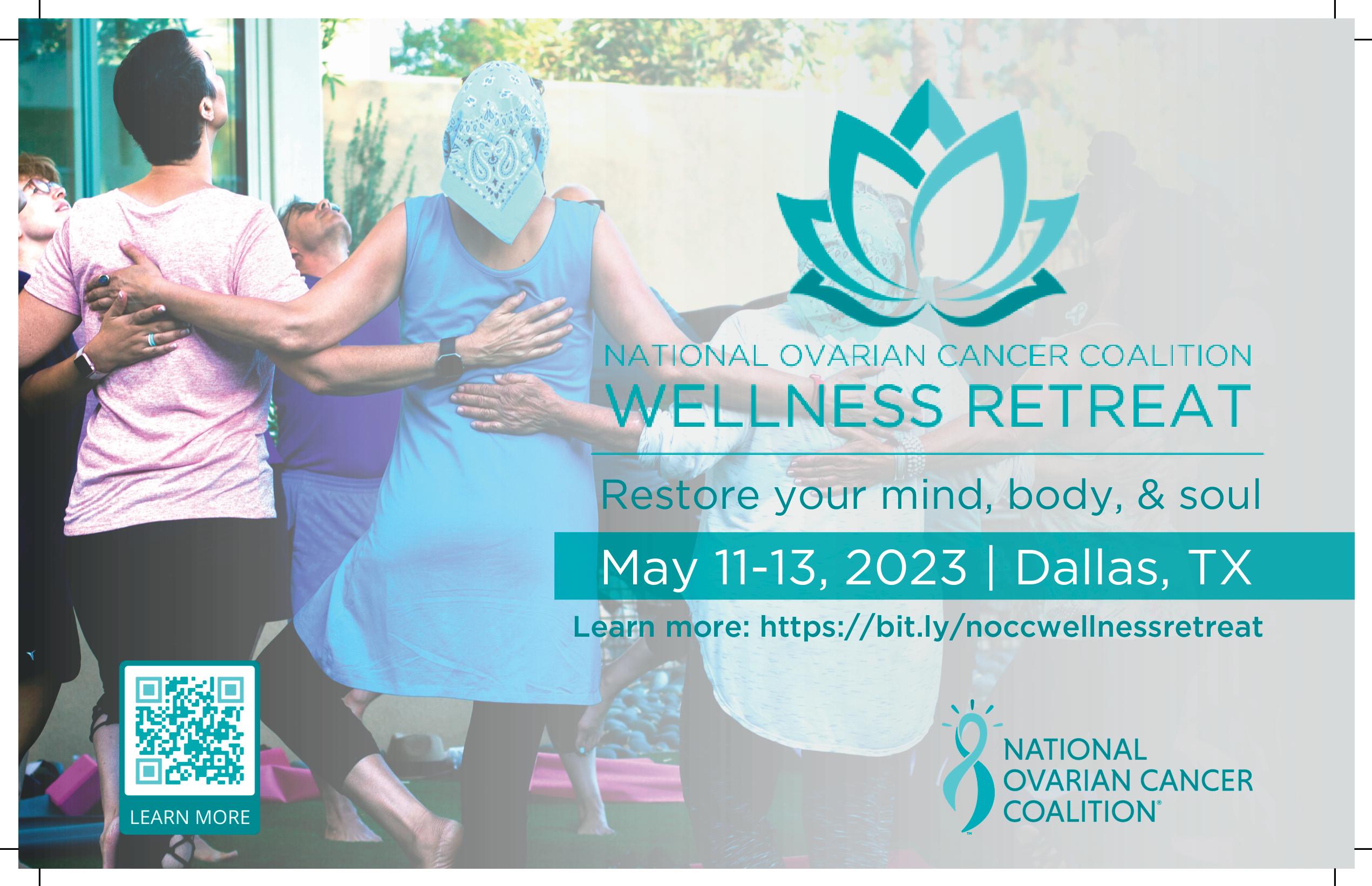
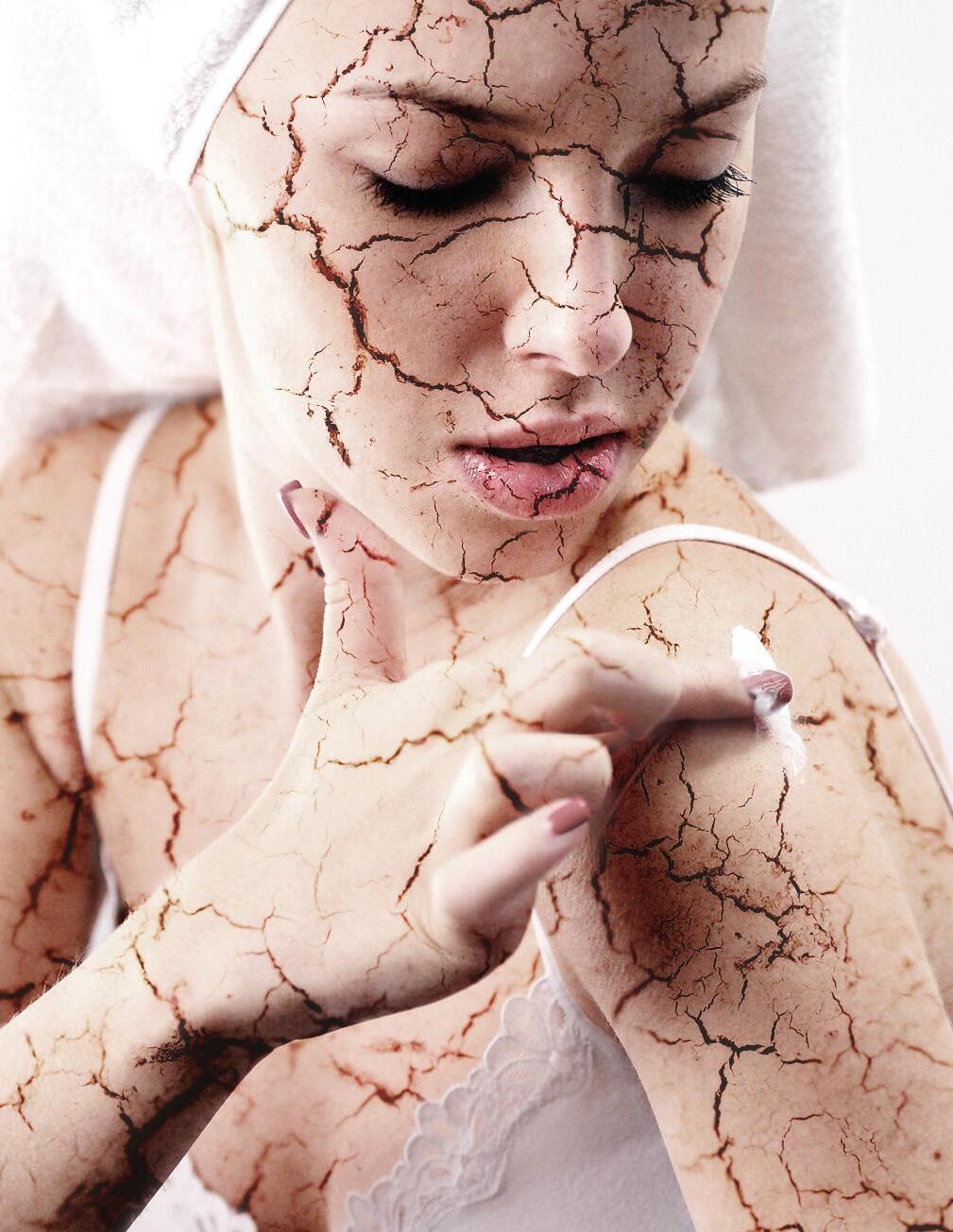
in the Dry Days of Winter
By Sophie Wix and Jennifer Gill, MD Ph.D.
Seasonal changes can affect our bodies in many different ways, including migraine flares, joint pain, allergies, dry skin, and even depression. The reasons for these changes are often multifaceted, commonly involving seasonal external stimuli affecting our internal biology. Cancer treatments can exacerbate these changes even further and many patients find they feel the effects of seasonal changes more intensely, particularly in relation to the development of dry skin, nails, hair, nose, and lips.
In the wintertime, it’s no secret that dry skin is a common problem. Xerosis, the medical term for dry skin, is often seen in older adults and those living in low-humidity, colder climates. This is often attributed to the use of home heating systems which can cause significant dryness in the air, especially in the winter. But what some people don’t know is that age itself is a common precipitant of skin dryness. As we all get older, the oil glands in our skin tend to shrink and slow down production of important skin barrier components like ceramides, hyaluronic acid and oils. Post-menopausal women or patients on hormone therapies are also at risk, as we now know that states of decreased estrogen accelerate skin dryness, fragility and wrinkling. All of this, in addition to chemotherapy and anti-cancer treatments, can exacerbate skin dryness for women living with cancer. But we have solutions to help you lock in moisture during those dry winter days and prevent skin dryness in your everyday routine.
Your skin naturally produces overlying oils that serve as a barrier, allowing the skin underneath to remain well-hydrated. The key to managing dry skin involves two overarching strategies: 1) minimizing the loss of these natural oils, and 2) applying appropriate products that can replenish lost oils and serve as a barrier when needed.
First, to prevent the loss of your skin’s natural oils, minimize anything that targets and removes oil. This includes hot showers, strong soaps and aggressive scrubbing. Avoid topical products that contain alcohol (this includes many lotions in pump bottles), which can further exacerbate drying.
Next, to replenish your skin barrier, focus on applying moisturizing products with the right ingredients. Hyaluronic acid and ceramides are chemicals naturally produced by the body. They both work in different ways to bind water molecules and lock in hydration. Moisturizers that have these ingredients are often dermatologists’ favorite. When shopping at a pharmacy or grocery store, look for products that contain hydration-promoting ingredients, including hyaluronic acid, ceramides and glycerin. When applying these products, use them liberally and frequently to get the fastest results. For
added benefit, put them on immediately after showering and again right before bed underneath skin-hugging cotton pajamas (this helps keep products from rubbing off!).
Here are some more tips for keeping your skin moist during the winter.
Use an air humidifier in the bedroom and common areas of the home.
Use hot water to wash hands or take long, hot showers; instead, keep showers short and use warm or lukewarm water when washing or bathing.
Use mild cleansers (especially for hand washing)
Preferred Syndet cleansers (synthetic detergent), and Mild soaps with low pH.
Moisturizers
Ceramides
Hyaluronic acid
Vaseline/Petrolatum jelly
For particularly cracked and dry hands, consider wearing moisture-locking gloves with a moisturizer of your choice during sleep overnight.
Wear dish gloves to protect your hands when using household cleaning products.
Keep lip protection/emollient handy and use frequently.
Use aggressive scrubbing of the skin when washing or bathing.
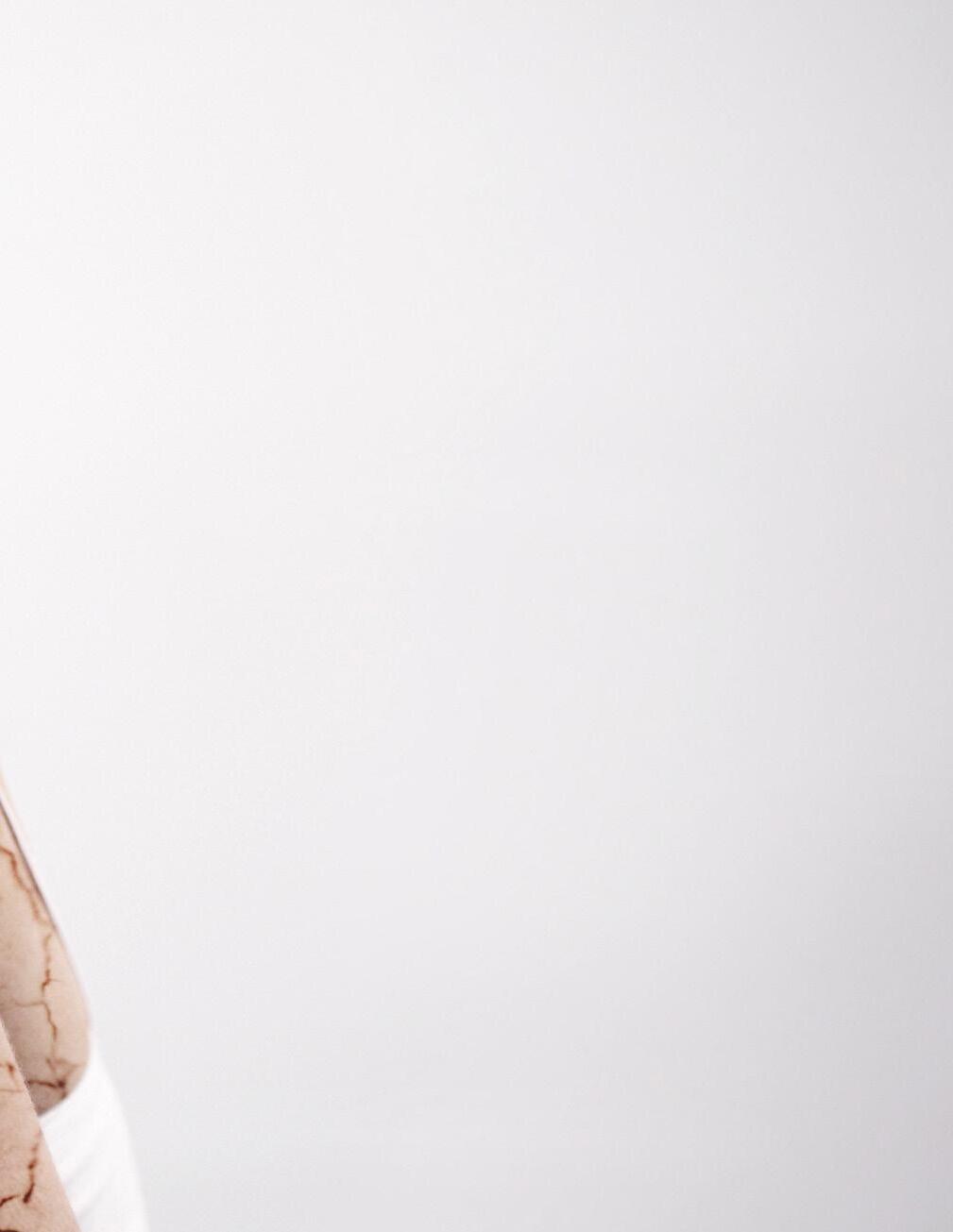
Use moisturizers in a “pump bottle,” which often contain alcohol that can ultimately worsen dry skin; instead, choose ones in a jar or tube.
Use fragrances or soaps/ detergents with fragrance.
Use harsh soaps, strong detergents, dryer sheets, and fabric softeners
Be in the habit of “lip-licking” which can worsen chapped lips.
While these recommendations will go a long way in improving and managing dry skin, some patients still need stronger interventions. If you find you just aren’t getting to your goal, it may be time to contact a dermatologist. Do your best to get into proper skincare habits before there is a problem. Keeping skin in good, healthy, moisturized condition is much easier than “rescuing” dry, flaky skin that is already inflamed and irritated. Get into a good routine and before you know it, spring will be right around the corner!

“What I learned during those years was that the emotions of children who are watching a medical trauma play out in the home are extremely surprising and quite complex.”

By Keri Steele Founder of Little Hearts of Hope
We have all heard the phrase that cancer affects the entire family. What if that family includes young children? How much do they actually understand when a loved one is diagnosed with cancer?
When my late husband, Will, was diagnosed with terminal cancer at the age of 33, we had three young children at home ranging in ages from 2-6. I was a stay at home mom, we had recently purchased our forever home, and I had just started homeschooling my oldest. I was 31 years old and grappling with my husband’s diagnosis.
My first instinct was to put them into therapy. I had no idea how to handle the situation on top of reeling from this news myself. Will was given 6 months to live, but by the grace of God he fought for almost 3 more years with terminal cancer. During those three years, I learned a lot from the different sources that we reached out to for help. The children were in play therapy weekly and I would join them once a month for a family session.
Children are naturally self-focused and have very active imaginations. If they aren’t told what is happening with a cancer diagnosis, they will often make something up to explain it to themselves or they will push down the feelings they are experiencing because they can’t make sense of them. What they don’t understand is that those feelings will come out eventually, and usually in an unhealthy way that can be damaging to both themselves and their loved ones.
Children are incredibly intuitive and know when something is wrong. When we are open and honest with them about what is going on, in age- appropriate ways, it opens lines of communication and it builds trust within the family. These are both very important aspects in raising resilient children and empowering them to build a tool set of emotional regulation, selfconfidence, and healthy coping skills.
Practically speaking, the first step in supporting children who have a loved one that is fighting cancer is to make sure they have an emotional vocabulary from which to work. This can be done by printing off an emotion chart. You can find them in varying degrees of complexity all over the internet. I recommend that families print out and even laminate a chart to hang in each child’s room or in a common space so that it can be revisited on a regular basis.
If we are honest, big emotions can be hard to name, even for us adults. It might be helpful for us to revisit the complex world of our emotions too! Some of the emotions most common for children in this situation include anger, loneliness, jealousy, abandonment, sadness, false guilt, embarrassment, disappointment, worry (temporary), and anxiety (chronic). Not every child will experience each of these emotions, but these are the most common.
Once you understand how the cancer diagnosis in the family can affect children, the next factor in helping children overcome this trauma is to understand that children work best through play and art. Some kids do better with one or the other, and each child is uniquely different. You will only know what is best once you start experimenting with play and art activities.
Children often have trouble communicating deep emotions, especially those that are often labeled as “bad” emotions such as anger and jealousy. When children are being creative, however, whether through play or art, walls come down and suppressed emotions often come to the surface. It can give parents and therapists, if the child is seeing a counselor, an idea of what that child is struggling with.
As parents, we can often feel ill-equipped to help our children deal with such difficult topics. It may be necessary to reach out to a therapist in your area from time to time or as a regular resource, in some cases.
Trust your parental instincts and be present.
You don’t have to be a therapist to empathize with your child.
Parents can make a huge impact in the lives of their child just by being present and listening. Your love for your child and your presence in their time of suffering is more powerful than you know.
Time devoted to playing or creating with your child will often lead to beautifully honest conversations that allow you to speak into their hearts with love and support. One of the most powerful things we can do as parents is to remember that we can’t fix everything. We can’t protect our child from suffering in this world, but we can walk with them through it.

Consider your own relationships as an adult. Those family members and friends who sit with you when you are sad even when they can’t take away our sadness are the ones we turn to when we are suffering. Our children need our presence; it is a powerful tool!
If you would like more in-depth support during a cancer diagnosis, please reach out to Little Hearts of Hope. LHOH is a nonprofit that supports children ages 4-14 who have a parent or sibling fighting cancer. Their Hope Package Program, a free service for families digs into each of the emotions listed above with fun and creative ways to connect to your child(ren). LHOH considers it an honor to walk alongside families as they navigate cancer with young children in the home.
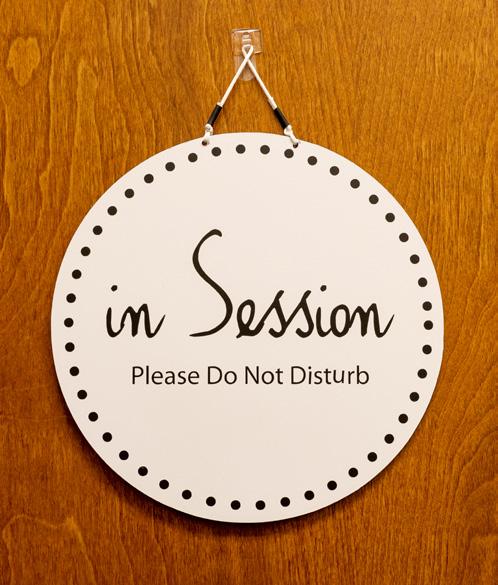
By Amy Scottino LMT, MTI, CEP
Did you know it’s both safe and beneficial to receive regular massages during and post-cancer treatment? There is more and more research being done on this topic to help practitioners feel comfortable recommending oncology massage to their patients. Most importantly, find a trained oncology massage therapist.
All states have a governing body for keeping licenses current and making sure massage therapists are following all the rules and regulations. However, they only regulate the licensure for massage therapy. There are many massage modalities or specialties that are not regulated, including oncology massage. Every two years, massage therapists are required to undergo at least 12 hours of continued education to renew their LMT license. The oncology massage specialty consists of an educational class that gives us a certificate of completion rather than a certification. There is definitely a need for more and higher education in this particular specialty.
In the early years of massage therapy, practitioners were told to avoid massaging clients that had cancer, because we could spread the cancer or burst a tumor. There wasn’t enough research in existence to show either harm or benefit. Personally, I struggled turning away patients, believing there had to be a safe way to touch them. The question became much bigger and that much more personal in 2007 when my younger sister, at age 25 and 5 months pregnant, was diagnosed with malignant melanoma stage III. I became highly motivated to educate myself on delivering safe massage to cancer patients.
I learned about manual lymphatic drainage and immediately knew I was on the right track. Fast forward some years, and oncology massage became an organized modality with two amazing creators/educators. One groundbreaking professional, who also happens to be my mentor, is Gayle MacDonald. Another amazing leader in the field is Tracy Walton, who has an organization that trains oncology massage therapists. These two brilliant women have changed the landscape, so that therapists can deliver safe massage to people living with cancer.

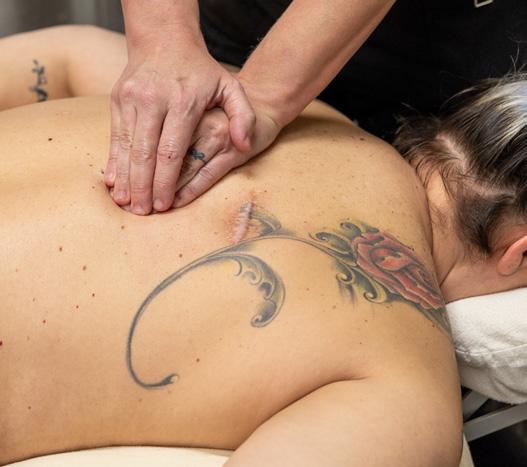
So, in response to the big question: is massage safe for people living with cancer? The answer is a resounding YES! Personalizing each session to the individual client is the key to safety. This is where the additional education becomes crucial for the therapist. For instance, if a client is fatigued from chemotherapy or radiation, the therapist could adjust the session in a few ways: shorten the length of time, the amount of pressure used or even the speed of the massage strokes. One article validates this approach, stating that the aforementioned massage technique, comparable to a Swedish or relaxation massage, caused “a significant reduction in fatigue, a debilitating sequela.” 4 This is monumental for my clients that suffer from fatigue, and many of them have reported an improved quality of sleep the night of their massage.
As an oncology massage therapist, I want to help my clients “heal.” The best time to heal is when our nervous system is in parasympathetic mode, the time to rest and digest. Most of my clients living with cancer are in a constant state of sympathetic mode (the flight, fight or freeze mode). In each “mode,” hormones are being released; however, if we stay in sympathetic mode for too long, it will take a toll on our bodies. For instance, when the sympathetic nervous system is triggered, “an infusion of glucose is shot into the bloodstream for a quick energy boost.”5 If we need to run away from a bear in the woods, this is super helpful! A study found that “just 10 minutes of massage activates the body’s parasympathetic nervous system.”6 If a massage session is 60 minutes in length, the client will be in parasympathetic mode for about 50 minutes. This allows the body, mind and spirit to reset, and it will break the pain cycle, even if it’s just for those minutes.
There is abundant convincing evidence to demonstrate that oncology massage is both safe and helpful. To find an oncology massage therapist near you, follow this link: https://www.s4om.org/resources/preferred-practitioners/
Footnotes listed on page 22
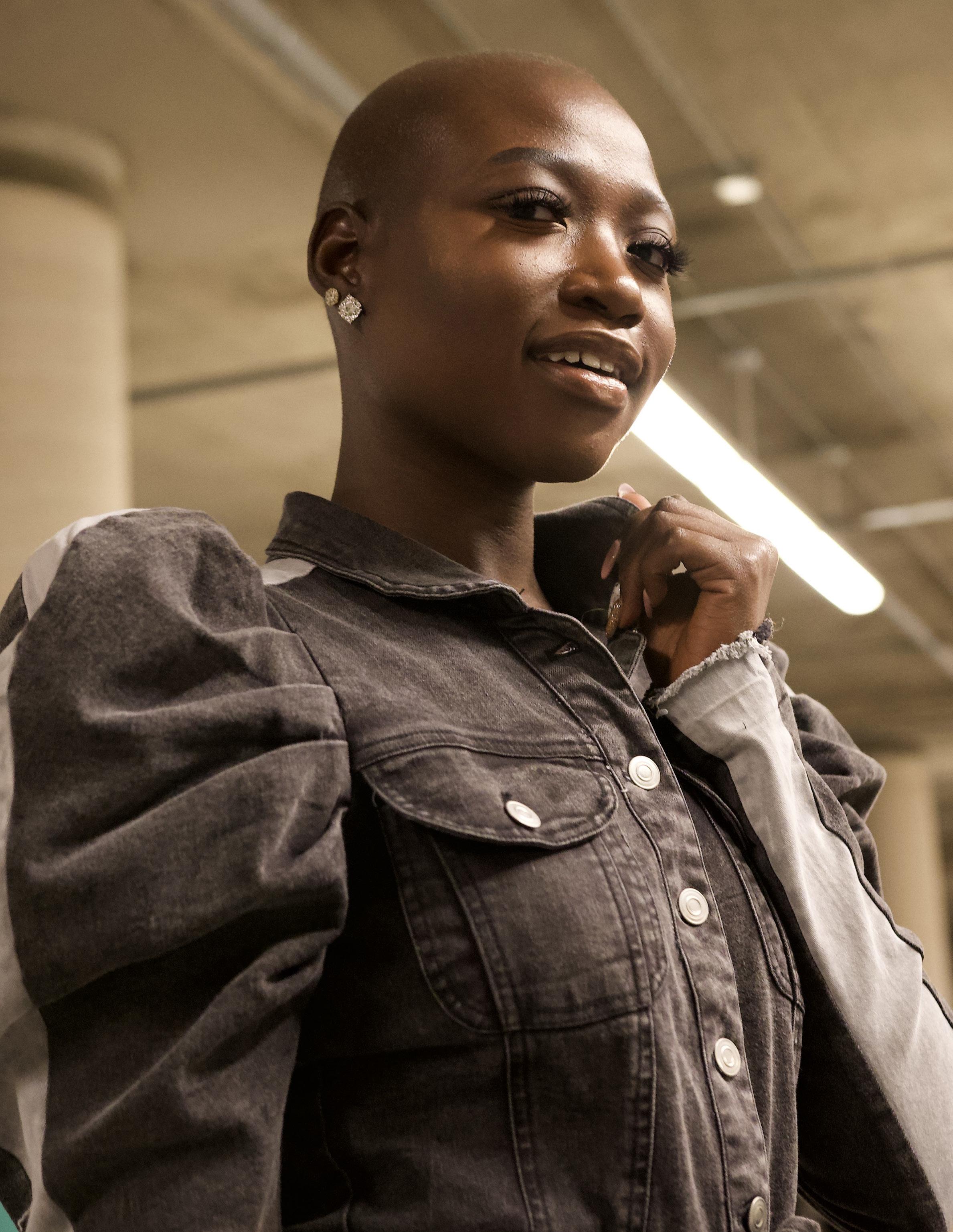
By
This artistic survivor sees a future in fashion where women with cancer don’t have to sacrifice style or comfort during treatment.
We all know someone who’s effortlessly stylish. They always seem ahead of the trends, never look boring, and consistently pull off even the most daring fashion choices. We ask, “Were they born with it?” In Ssiala’s case, the answer is yes.
According to her, she “came out of the womb like, ‘Mom, where is the mascara? Where is the stage?’” So it’s no wonder she did pageantry all throughout her childhood and got into modeling in her later years. In college, she went a step further and discovered styling. But a creative mind like Ssiala’s can not be tied to something she doesn’t truly want to do, and after attending four different universities and switching her major multiple times, she concluded that college wasn’t for her.
“I felt that fashion school was slowing me down, and I wanted to do my own thing,” she said. She began to question society’s definition of a “great education,” and she found that there was no one answer. For Ssiala, the best education she could receive was a real-world experience, so she began to focus on building her own business instead. “College has always been something I’ve being trying to force and mold into my life. But it’s not something I can stick with, to be honest.” Of course, another huge factor that turned Ssiala’s life upside down and motivated her to leave school was her diagnosis.
When asked about her role models, Ssiala thought about her 4-year-old niece Ka’loni. “She spoke so much life into me,” Ssiala commented. Ka’loni was constantly full of joy and energy, no matter what challenges life threw her way. Ka’loni would tell Ssiala how beautiful she was and compliment her bald head. “When I shaved my head, she said ‘You look so pretty. You look like a Barbie,’” Ssiala told us. She would describe how she wanted to go into fashion and have Ssiala as her model or her stylist. “My niece was somebody that I could touch and hear from and hold hands with… Instead of looking at [celebrities], I focused on my niece.” Ssiala said.
Like her niece urged her to do, Ssiala kept modeling through cancer. And to her surprise, she actually got more model bookings than ever before. “Of course, sometimes I was very sick, but you couldn’t always tell that, because I would just be strutting.” She learned that you really just have to have confidence, regardless of whatever you are going through. But Ssiala noted something else as well. “The beauty and fashion industry has some work to do,” she commented. She found it concerning that she was praised for her thinness and unique bald head when she was going through toxic treatments.
“Her unique style pushed her doctors to see her as a person not just a patient.”
In 2018, doctors diagnosed her with a very rare form of uterine cancer. Normally, this cancer derives from an ectopic pregnancy; however, Ssiala had never been pregnant. A variety of tests proved this, but, still, some people - even a few doctors - did not believe her. “I was shamed a lot.” Ssiala said. She hesitated to tell people what kind of cancer she had because even some family members met her with judgment. “It broke my heart,” she told Brighter. While some friends and family did fall off in this way, many gave her immense support.
“My mom was my rock,” Ssiala said. Her mom stopped going to work to take care of her. Her brother, who had recently passed, was a “trailblazer,” and his spirit constantly reminded her to keep going.
Ssiala connected with her love of fashion in a variety of ways throughout her cancer journey, as it allowed her to retain her sense of self. “If I really wasn’t feeling good that day, I would wear black on black or grey on grey,” Ssiala noted. She said, “ If my niece was there, I would wear all pink.” She loved this denim dress her mom gave her and donned it frequently for its port accessibility. Ssiala believes her unique style pushed her doctors to see her as a person and not just a patient. “[Cancer] can break your independence,” Ssiala told Brighter. But fashion helped her to not just maintain, but elevate these qualities. Even though sacrificing her independence often felt a weakness, Ssiala found strength in vulnerability, in being able to open up and lean on others. She said, “I learned that strength and femininity and being a woman doesn’t really have a definition.”
Continued on page 22

After three different prescription treatments and a partial hysterectomy, Ssiala was officially declared cancer free on August 5th, 2020. But it’s never truly over. “When they say you are cancer free, that doesn’t really mean the cancer goes away and you can just ignore it. I tried to for a very long time, up until a few months ago…” she commented. She now has a new point of view. “I want to be a voice and a light. I want to tell my story not through a point of pain, but through a point of thriving, not just surviving,” she commented. She even changed her name from Tatyana-Aaliyah to Ssiala to embrace her new approach with greater conviction.
Ssiala sees the world differently now. Her mind has been opened in a way she never imagined pre-cancer. She grew up Christian, but cancer made her question the things she had learned. “I started to see life as this huge bundle of joy,” she commented. While she may not be the most religious person, Ssiala has become increasingly spiritual. “[This experience] gave me an insurmountable amount of faith in God.”
She had not just a spiritual awakening, but a personal one as well. She emphasized finding peace within yourself and not just things or other people, and knowing who you are in a crowd full of people. “I feel in tune with the natural world, and God, and myself,” Ssiala told Brighter.
Now, Ssiala hopes to spread her light. As Ssiala came through cancer, she struggled to find clothes that looked right, made her feel really good, and worked with the port. Taking fabric sensitivity into account created a whole new battle. So, she now wants to create those clothes for other women. She said, “Women of all walks of life and illnesses really do need to be represented.” She is also writing a poetry book to give hope to those struggling. The best part: it doubles as a coloring book.
Ssiala showed us at Brighter her unique energy and resilient spirit. She prefers to describe her journey as “coming” through cancer, rather than “going” through cancer. So as we all come through various holiday season and winter struggles, let’s try to take a page out of her book.
Massage Therapy for Cancer References: Continued from page 18
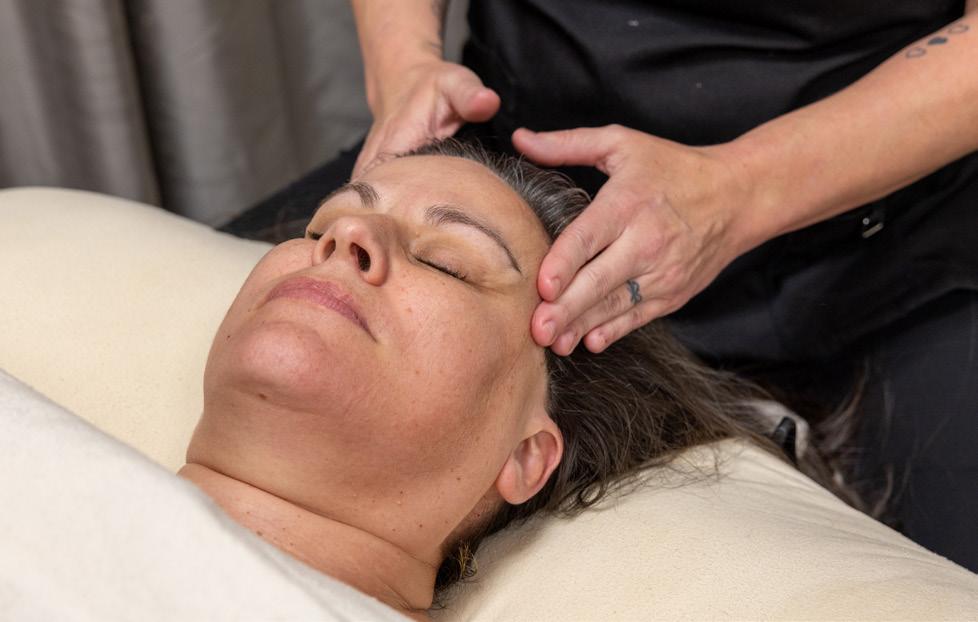
1.https://www.tdlr.texas.gov/mas/mas.htm
2.https://www.abmp.com/textonlymags/article. php?article=153
3.https://www.tracywalton.com/ 4.https://pubmed.ncbi.nlm.nih.gov/29044466/ 5.https://www.livescience.com/65446-sympathetic-nervous-system.html
6.https://www.northwestcareercollege.edu/blog/ new-study-shows-massage-measurably-reduces-stress/#:~:text=The%20study%20found%20that%20 just,more%20relaxed%20after%20the%20tests.

Nikki Barnett, Hoover, Alabama, age 44
Diagnosed in 2017
Stage 2A breast cancer
Diagnosed at age 38
Brighter: You’ve taken on strength training. Tell us about it.
Nikki:
Exercise has always been a part of my life, but pre-cancer (and the osteopenia diagnosis that preceded it), my routine was more cardio-centric. I loved everything from spin class to aerobics, and I would enjoy a good run. Post-cancer, I knew I still wanted to exercise, but I had to recognize that my performance level wasn’t what it used to be. Chemo had actually sent my body into osteoporosis, and I was determined to do all I could to reverse it. I did a lot of research and it became quite clear that weight training is a game changer when it comes to keeping our bones strong.
Brighter: How did you get started?
Nikki:
I set a realistic goal for myself of going just once a week. Even though I wasn’t going very often, I worked hard when I was there, putting in a whole body focused workout. For inspiration, I also started following a couple of Instagram accounts (@jeannie.g.fitness and @pancakesandpush_ups) and that helped me with form and technique.
After a few weeks, I moved to two days a week, splitting up upper body (first session of the week) and lower body workouts. I gradually increased to three days a week (30-60 minutes each time), and just make it work with my schedule, right after school, every Monday, Tuesday and Thursday.
I supplement the weight training with daily walks, as long as my schedule allows for it. The combination makes me feel like I’m doing my part to keep my bones healthy, and I’m also happy to be a good example for my children. There is a lot of emphasis out there already on the importance of moving and exercise in general, but I’m glad to have reason to show them that strength training is just as critical.
Brighter: How has strength training impacted your osteopenia?
Nikki:
I’m four years out from active [breast cancer] treatment and started weight training two years ago. My bone density scan last August came with great news. No more osteoporosis! I am holding steady, still with osteopenia, but that’s a huge win to have reversed further bone weakness. I take this as proof positive that strength training is a real game changer.
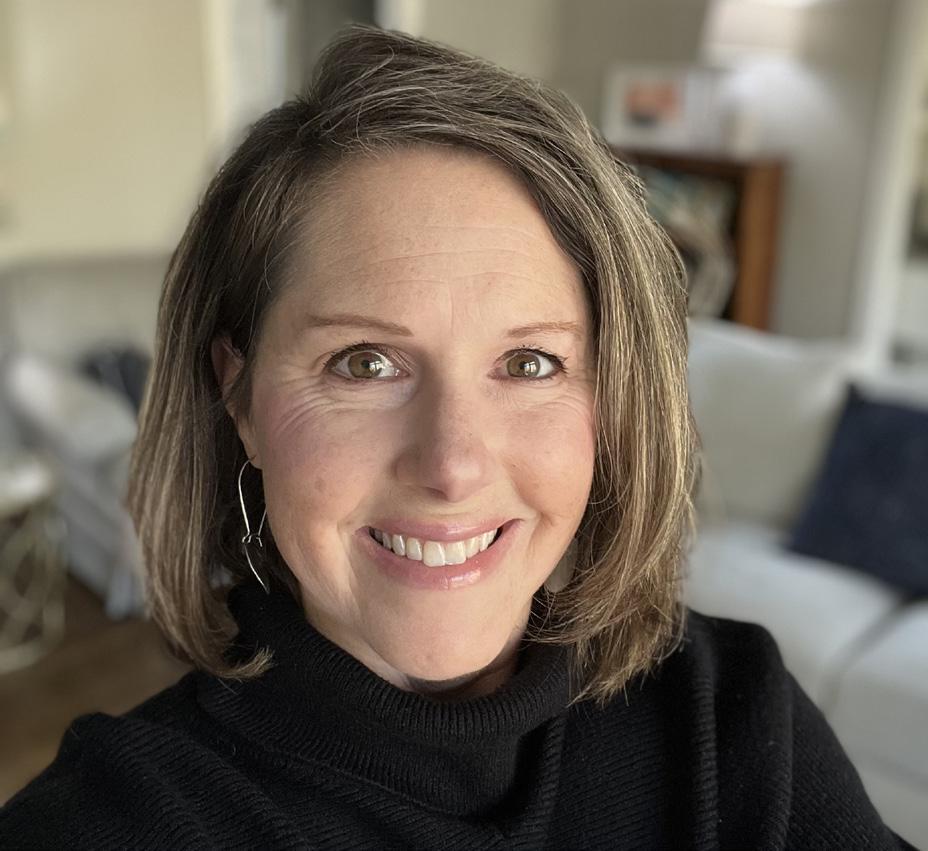
Brighter: Advice to those who want to start but might feel intimidated?
Nikki:
First of all, be mindful of what you see others doing. As much as the Pancakes and Pushups Instagram coach inspires me, I don’t get caught up in a comparison game. Sure, she’s 50 plus and fabulous, but she and so many others like her haven’t been in our shoes.
When you’ve gone through what we have, between cancer, chemo, surgeries and all the physical and emotional havoc that comes with it, we have to not lose sight of the fact that our paces and stamina levels are going to be different.
So that’s the first piece of advice I’d offer – remind yourself as often as you need to that everyone is different.
Next, know why you’re doing it. To look at me, you can’t even tell that I exercise (thank you, menopause). But I’m not doing it to look like a bodybuilder or for looks at all. I’m doing it because it makes my body feel good.
Also, celebrate the small wins! I knew I was getting stronger when I went to the gym with a friend. She is just your average happy go lucky mom and fortunately, she hasn’t dealt personally with cancer. About halfway through our workout she turned to me and was just in awe. “You’re so strong! I can’t lift half the weights you do!”
Lastly, go at your own pace, even if it means you have to let go of some things you did before cancer. As an example, I can no longer walk with friends. They have 16-17 minute miles when they walk, and I’ve told them, ‘I love y’all, but I cannot walk with you. It gives me too much anxiety to try and keep up with them, and I just can’t do it.’
So now, I use solo walks as my prayer time. I put on my praise and worship music and use those walks as my time with God. Sometimes I’ll have my sunglasses on and I may even have a good cry, just depending on the day, what my friends are going through and what’s on my heart. When you’ve walked this path and you have a friend going through it, a lot of powerful emotions come right to the forefront.
By Cara Price PN1 Nutrition Coach, CrossFit L1 Trainer
Cancer treatment and recovery are challenging in many ways, and food and nutrition play an important role. Unfortunately, patients often lose their appetite as a side effect of treatment.
It’s estimated that 40% of cancer patients are malnourished, causing less than optimal body performance. But focusing on nutrition can help change the way the body works and responds to healing. A well-nourished cancer patient can better manage therapy and improve quality of life during treatment and recovery, so choosing nutrient-dense foods during this time is essential.

All food contains nutrients that get broken into two categories: macronutrients and micronutrients.
Macronutrients are sorted into 3 simple areas, carbohydrates, proteins and fats. However, micronutrients are made up of about 30 different vitamins and minerals that are contained in the food we eat. Some of the micronutrients that we need and can get from food include vitamins A, B, C and D, calcium, iron and potassium.
do I make sure I’m eating enough of the right foods?
To be sure you are fueling and nourishing your body properly, put an increased focus on eating a wide variety of micronutrients. By focusing on nutrient-dense foods, getting the best and broadest variety of micronutrients will happen naturally.
Without the inclusion of a wide variety of nutrient-dense foods, nutritional deficiencies can inhibit the body’s ability to regenerate, repair and heal. However, a diet rich in vitamins and minerals can help a patient regain strength and energy, rebuild cells and feel better overall.
Eating a wide variety of whole foods will give your body a nutrient-dense kickstart to recovery and wellness.
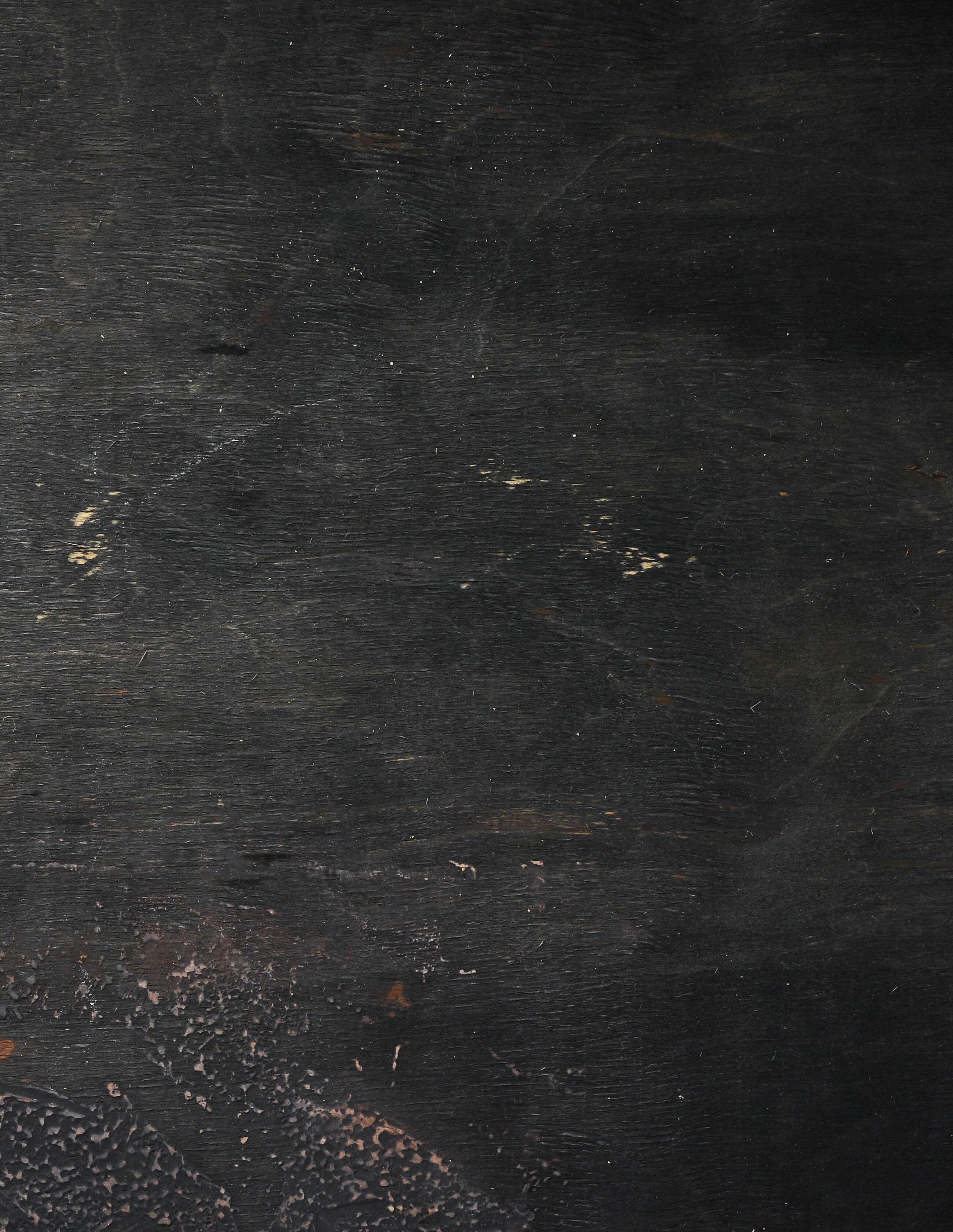
Paying attention to the nutrient density of diet, versus specifically focusing on calories or macronutrients, can help you feel better.
Foods that are rich in a wide variety of micronutrients are: Green leafy vegetables – kale, romaine lettuce, spinach and collard greens. Each of these vegetables contains high amounts of vitamins A, C, and K, folate, and magnesium. Bright-colored vegetables – carrots, peppers, cabbage, and squash are full of potassium, magnesium, and vitamins.
Quality sourced protein – wild-caught fish, grass-fed beef, cage-free eggs, and pasture-raised, organic chicken are just a few of the animal proteins that contain iron, zinc, and vitamins A and K.
Healthy fats – avocados, coconut, olive oil, nuts, and seeds are unmatched in benefits from heart-healthy omega-3s, to selenium and magnesium.
Each micronutrient is essential to health. When going through cancer treatment or recovery, focusing on a wide variety of these micronutrients with a well-rounded diet will be an essential key to feeling your best.

1 tablespoon fresh rosemary, finely chopped
1-1/2 teaspoons salt
1 teaspoon pepper
freshly ground salt
quality spray oil
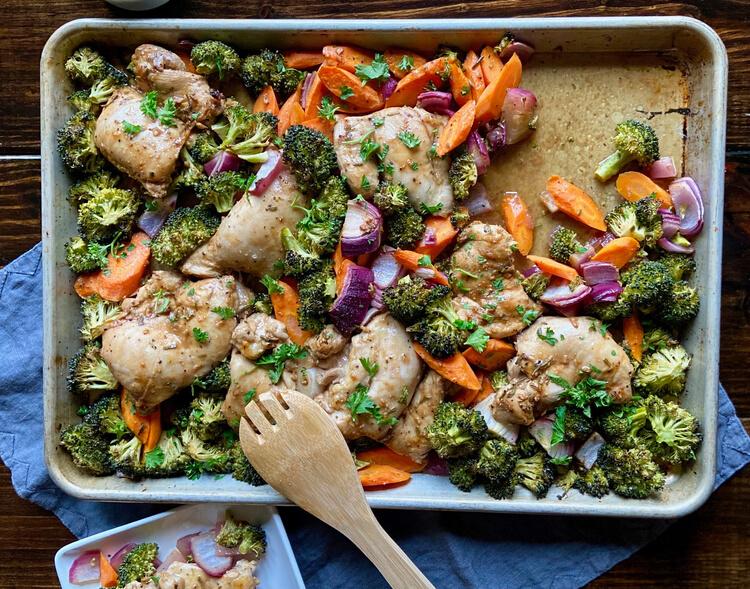
2-2.5 pounds chicken thighs (8-9 pieces)
4 cups broccoli florets
1red onion, cut into sections
3-4 carrots cut on the diagnol
4 cloves garlic, minced
1/3 cup balsamic vinegar
1/4 cup olive oil
2 tablespoons dijon mustard
1/4 cup fresh parsley, chopped
1 tablespoon fresh rosemary, finely chopped
1-1/2 teaspoons salt
1 teaspoon pepper
freshly ground salt
quality spray oil
make spaces to place the chicken on the sheet pan, then give it all a quick spray of oil
bake 20-22 minutes. season with freshly ground salt as soon as you take it out of the oven.
garnish with parsley
enjoy!

preheat the oven to 425
in a small bowl, whisk together the balsamic vinegar, olive oil, dijon, garlic, rosemary, salt & pepper
remove 1/3 cup of the mixture & place it in a resealable bag with the chicken.
set aside to marinade while you chop & prepare the vegetables.
spray a large, rimmed cookie sheet with oil & then spread the vegetables out in an even layer. pour remaining marinade over the veggies, making sure it is evenly distributed
make spaces to place the chicken on the sheet pan, then give it all a quick spray of oil.
bake 20-22 minutes season with freshly ground salt as soon as you take it out of the oven.
garnish with parsley
enjoy!
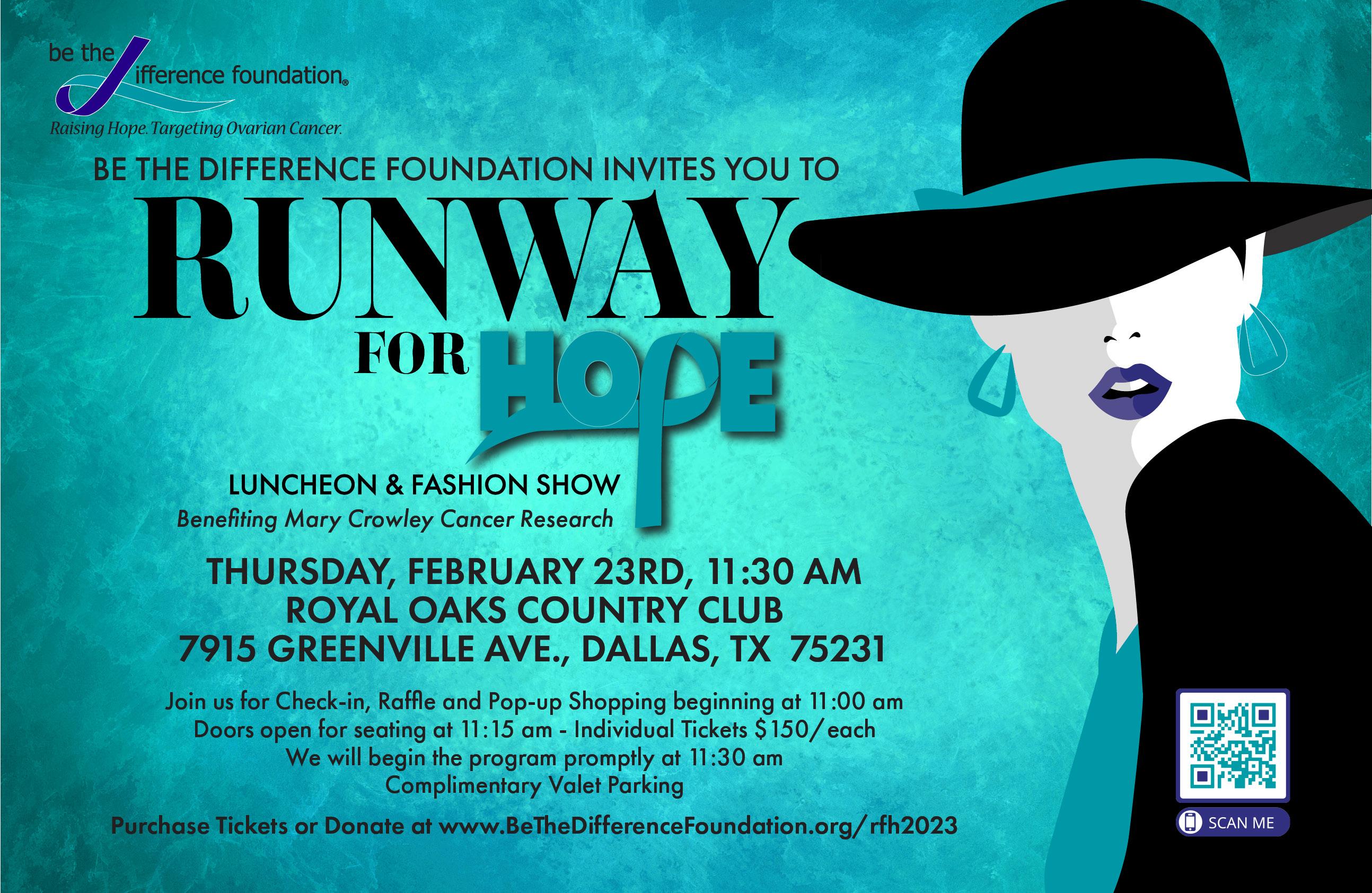

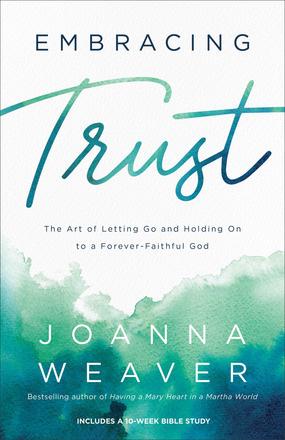
“Embracing Trust: The Art of Letting Go and Holding on to a Forever-Faithful God” by Joanna Weaver
This is Joanna Weaver’s second book (worth noting, “Having a Mary Heart in a Martha World” was her first and still a favorite of mine). Her writing style is engaging and encouraging while she infuses scripture and holds steadily onto biblical truth. Somehow, she balances it in a way that captures your heart and builds your faith, but without being dry or point-a-finger preachy.
In this particular book, Weaver reminds us of God’s trustworthiness, regardless of circumstances. Filled with personal examples, as well as practical steps to release our grip on all the things we attempt to control, she invites readers to experience the Father’s love at deeper levels that carry us through challenging times. With an encouragement to cling to God, she reveals more of who He is, why He’s worth it and how to move closer to the comfort only He can bring. Whether you’re currently in the midst of difficulty or not, this book opens eyes and hearts to hope and healing.
- Erin

“Between Two Kingdoms” by Sulieka Jaouad
My son reached out recently suggesting this book to me. Once I picked it up, I couldn’t put it down. Sulieka Jaouad is the wrote the Emmy Award winning New York Times column Life, Interrupted.
In this book, Jaouad shares, with incredible vulnerability, her journey as a 22-year-old diagnosed with Leukemia, receiving a bone marrow transplant and traveling the long road of recovery while trying to find balance between the disappointment of a life sidelined by cancer and the desire to lead the “normal” life of a young woman in love. You will laugh when she laughs, cry when she cries, panic when she panics and celebrate when she celebrates. This book is perfect for the survivor who wants to know someone else can relate or anyone who wants to be inspired to find the silver linings of a tough situation.
- Helen

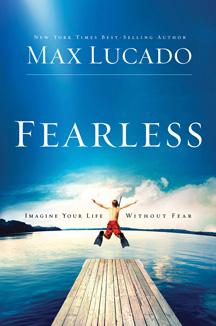
“Fearless” by Max Lucado
This is the kind of book with passages you want to highlight. It sparks faithbuilding thoughts that make you want to scribble a-ha notes in the margins.
I find myself reflecting on particular passages when a fear-fueled thought crosses my mind.
It’s so anchoring that this is actually the second time I’ve read it. The last time was in my early thirties and my life has changed so much since then.
This one is definitely worthy of your winter reading shortlist.
- Rebecca
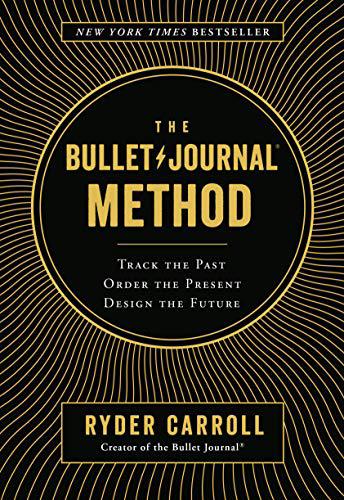
“The Bullet Journal Method” by Ryder Carrol
This book might be a solution to some of your chemo brain struggles! As a smart but scattered individual this book brought order to the noisy chaos of my mind.
Ryder Carrol gives the busy and absent minded person a method to track all your thoughts, to-do’s, doctors appointments, and moments of importance. With just a few short moments each day you will forget less and feel more in control.
Not only can you stay on top of everything but you will also be equipped to finally make headway on those long term goals that seem so elusive in a life affected by cancer.
Using a bullet journal is easy and quick. Jot three to five words or take a page for your thoughts. It can be strictly function or you can use your time in the treatment chair to add some flair and creativity.
- Helen
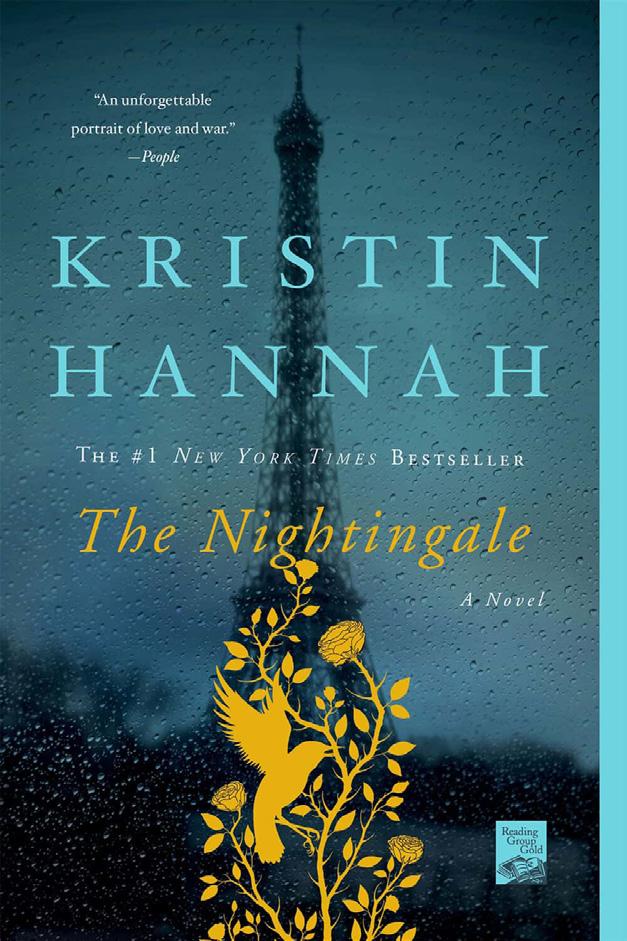
“The Nightingale” by Kristin Hannah
This is one of my favorite books as I’ve always been fascinated and in awe of all that happened during WWII.
It’s a thrilling story from past to present about two sisters who live through WWII in Paris, France. They are both full of courage and perseverance. Eloquently written, I loved every word and felt like I was in the book with these amazing characters who personify resilience and strength of the human spirit as they navigate their own paths to survive and love. And, the book has a really GREAT ending.
- Liz


By Mari Galle, DACM, Lac Doctor of Acupuncture and Chinese Medicine Licensed Acupuncturist Cancer Care Rehab Austin
Relief from symptoms related to cancer treatment? And it’s not invasive? And it can make a patient or survivor feel better to boot? Yes please!
These are just some of the reasons integrative oncology has come into its own. As anyone reading this magazine well knows, nothing about life with cancer is linear. Even when active treatment ends, there is no finish line. And regardless of where you are on the care continuum, you tend to live with a host of symptoms, some that appear during active treatment, others many years later. Why settle with discomfort when there are complementary therapies that can make a meaningful difference?
A quick primer about what integrative oncology is all about.
You have a team of practitioners - think every speciality from physical therapists, massage therapists, acupuncturists, registered dieticians, estheticians, counselors, reflexologists, physical fitness instructors, mind-body therapists and aromatherapists - and they’ve all got a concentrated training in oncology care. This cadre of providers will work with your traditional medical oncology team with a singular goal in mind - to help you feel your best.
It really depends on when you feel ready. From a practical standpoint, a patient or survivor can receive integrative oncology services at any point of the cancer journey, be it at diagnosis, during active treatment and into remission. One of the ancillary benefits of integrative oncology is the connection and camaraderie it fosters. There is such a boost that can come from connecting with specialists who help you feel understood and supported .
How do I find a practitioner who has advanced training in working with oncology patients?
Definitely do your research here! It is so important to find practitioners with advanced training in oncology care. Tear out this article or screenshot it on your phone, so you can quickly skim the specialty areas that may work for your needs. These concentrations all require advanced training and certifications, so you’ll want to verify that anyone you are considering meets those criteria.
In recent years, health insurance has started to cover various integrative oncology services. Physical therapy, acupuncture, massage and nutrition therapy may be covered based on an individual’s insurance plan and the practitioner’s decision whether to take insurance. Many times, if practitioners do not take insurance, they will provide a detailed receipt or ‘superbill’ for you to submit to your insurance company. It is also possible to use a flex spending account or health service account when utilizing these services. Be sure to ask your practitioner for more information!
Are there any tools
or practices that patients and caregivers can do at home to help mitigate symptoms and side effects?
Absolutely! Food therapy, acupressure, exercise and meditation as well as lifestyle modifications can make a significant difference in symptoms that affect quality of life.
Food Therapy: The concept of using foods to help manage symptoms. For example, ginger or peppermint can be helpful with nausea.
Acupressure: Applying gentle pressure with two fingers or thumb for 30 seconds to 1 minute on specific acupuncture points that have been shown to help certain symptoms. Exercise and Meditation: Research shows that home exercises like qi gong, tai chi and yoga can help with energy, neuropathy and balance.
I look forward to sharing specific acupressure, food therapy and exercise protocols with this community in future articles!
practitioner near you:
Society for Integrative Oncology has an international database of practitioners who are members: https://integrativeonc.org/public-directory
The Society for Integrative Oncology also has a wealth of information for patients and caregivers: https://integrativeonc.org/
Physical Therapy
Strength and range of motion
Balance and gait training
Scar and tissue tightness and restriction
Pain, endurance, balance issues and fatigue
Axillary web syndrome (cording)
Pre-operative mobility assessment
Individualized post-operative exercise programs
Acupuncture
Pain
Fatigue
Nausea, Vomiting
Peripheral Neuropathy
Stress, Anxiety, Depression
Hot flashes
Insomnia
Constipation & Diarrhea
Cognitive function/mental clarity
Massage Pain
Anxiety, stress
Nausea
Peripheral Neuropathy
Swelling
Fatigue
Nutrition
Malnutrition
Fatigue
Digestive issues: Acid Reflux, Nausea, Vomiting, Constipation, Diarrhea
Aromatherapy
Digestive Issues
Stress
Fatigue
Sleep issues
Cognitive function
Emotional imbalances
Esthetics
Inflammation and redness
Itching and irritation
Dry skin
Supports integrity of the skin barrier
Exercise and Mind-Body Practices
Fatigue
Muscle Weakness
Stress and Anxiety
Depression
Neuropathy
